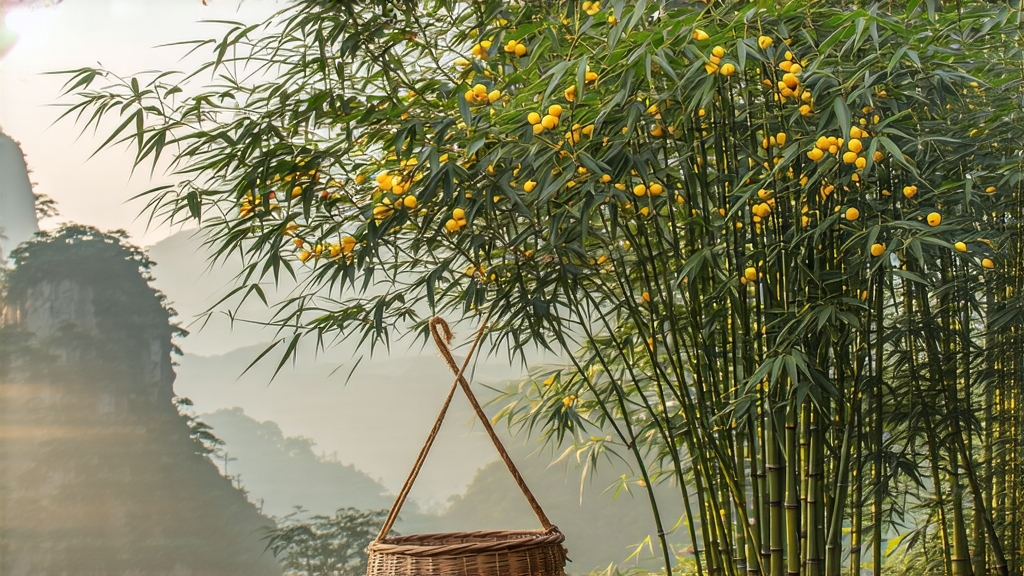
Tucked high above the Sichuan basin where perpetual cloud veils the Min River gorge, Meng Ding Huang Ya whispers of a court that vanished six centuries ago. Unlike the better-known green teas of neighbouring hills, this yellow bud tea was once sealed in wax and escorted by horseback to the capital, a springtime gift so scarce that even the emperor’s own scribes recorded it in single lines. Today the same narrow terraces cling to slopes between 800 m and 1 400 m, reachable only by stone steps slick with moss; the cool mist, rich loess, and diurnal swing of ten degrees coax the tea bush into storing amino acids that later translate into a brothy, almost milky sweetness. To international drinkers who meet it for the first time, Meng Ding Huang Ya feels like a quiet paradox: the leaf looks green, the liquor shines golden, and the taste hovers somewhere between fresh peas and roasted chestnut, finishing with a faint note of magnolia that seems to arrive from nowhere.
History first named the tea during the Tang dynasty (618-907) when a Zen monk planted seven bushes on the summit of Meng Ding, “the Misty Summit.” By the Song period the local magistrate had declared those bushes “imperial,” and every Qingming festival 360 buds—one for each day of the lunar year—were picked, steamed, and compressed into tiny cakes for the throne. When Ming emperors abolished compressed tribute tea in 1391, the mountain’s farmers were suddenly free to sell their surplus, but without court demand the technique languished; by the 1950s only three ageing masters still remembered the full yellowing process. A state-sponsored restoration project in 1964 recovered written notes from a descendant of the last imperial tea maker, and today roughly 120 households continue the craft under a protected geographical indication granted in 2012.
Botanically, Meng Ding Huang Ya is almost always picked from a local cultivar called “Meng Ding Qunti,” a seed-propagated population that differs bush by bush. The picking window is brutal: only three to five days around the solar term “Grain Rain” when the bud still hides a tiny unfurled leaf the size of a dove’s feather. A skilled plucker gathers 2 000 buds per hour, yet it takes 60 000 to yield a single kilogram of finished tea. The raw material is judged by three visible signs: the bud must be straight like a spear, the surface must be 70 % downy, and the colour should flash a jade-green iridescence when rotated in sunlight. Anything shorter, older, or purple-tinged is diverted to cheaper green-tea lines.
Crafting Meng Ding Huang Ya is a choreography of heat, moisture, and waiting that Chinese texts call “sealed yellowing.” The first step, “sha qing” or kill-green, is gentler than in green tea: leaves are tossed for 3–4 minutes in a bamboo drum set at 140 °C so enzymes survive to drive later transformation. While still warm, the buds are wrapped in thick canvas and left in a pine-wood crate for 40 minutes; the core temperature drifts down to 45 °C, initiating non-enzymatic oxidation that tints the leaf margin a pale straw. This bundle is opened, re-heated to 90 °C for thirty seconds to re-activate moisture, then wrapped again—up to three cycles—until the master smells the precise moment when grassy notes recede and a warm, bean-curd aroma emerges. The final low-temperature bake lasts 90 minutes over charcoal shaded by ash, reducing moisture to 5 % while adding a whisper of smoke that later reads as caramel in the cup.
Because the leaf is so young and the yellowing so delicate, western-style teapots often over-extract tannins, turning the liquor dull. The traditional Sichuan method instead uses a tall, thin-walled glass called a “gai bei” that doubles as brewing vessel and viewing chamber. Three grams of dry buds—about a level teaspoon—are dropped onto the bottom; 85 °C water is poured to one finger’s depth above the leaf and left alone for 45 seconds. During this pause the buds stand upright, then slowly sink like tiny green flags, a spectacle locals describe as “the forest standing in morning fog.” The first infusion is sipped for aroma; the second, at 20 seconds, releases amino acids and is the sweetest; the third, at 35 seconds, offers a lingering mineral finish reminiscent of